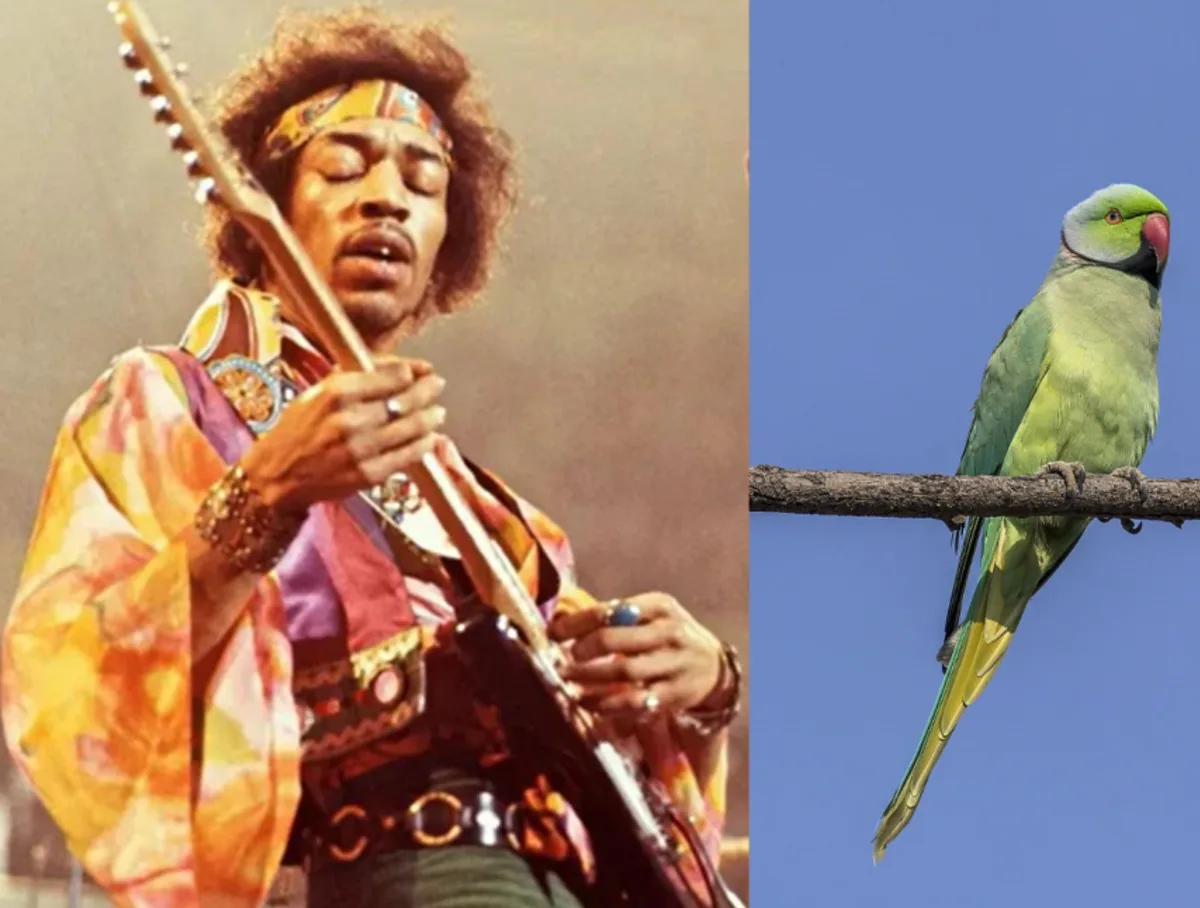Legends are often formed around rock musicians, which then live longer than the stars themselves. Sometimes we are talking about shocking behavior; in some cases, fans create entire conspiracy theories. “Verified” examined five famous stories about rock stars.
Is it true that Ozzy Osbourne bit off the head of a live bat?
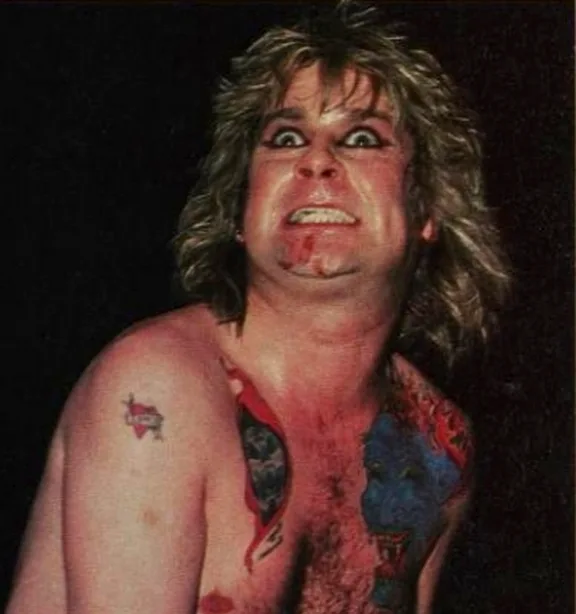
But in his 2010 autobiography, “I'm Ozzy" Osborne tells the story in even more shocking detail: "I knew right away that something was wrong. Not really. At first, my mouth quickly filled with some kind of lukewarm sticky liquid. And then the head in my mouth jerked.”
However, there is one more piece of evidence - the viewer who brought this bat. He presented his version of events shortly after the incident, and then his story was published in the Des Moines Register. Des Moines resident Mark Neal was 17 years old during Ozzy's performance. His younger brother brought the bat—quite alive at the time—home from school about two weeks before the concert. Then the mouse died, but the brothers did not throw it away and kept it in the refrigerator. Mark's friends convinced him to put the corpse in a bag, hide it in his coat pocket, carry it to the concert and throw it on stage. About the same spoke journalists and his girlfriend Carmen Martin.
Thus, there are two versions of this story. One, about a living bat, was stated by Ozzy Osbourne himself. The other one, about the dead one, is those who brought this mouse to the concert in Des Moines. But the second sounds more plausible: the reputation of Ozzy Osbourne plays an important role here, who could contradict himself within any given interview, and journalists often had difficulty understanding whether he was serious or fooling around.
So the bat was definitely present on stage, but apparently died before meeting Ozzy Osbourne.
Did Keith Richards really give himself a full blood transfusion to kick his drug addiction?
There are no less shocking stories about The Rolling Stones guitarist Keith Richards than about Ozzy Osbourne. They are mainly devoted to how Richards used a variety of drugs in the most incredible combinations and at the same time remained alive and relatively healthy (at the time of writing this analysis, the musician is already 81 years old, but he continues to perform concerts). According to common According to legend, the guitarist once underwent a complete blood transfusion to get rid of his heroin addiction before his next tour.
According to legend, Keith Richards decided to resort to a blood transfusion in 1973 so as not to disrupt a seven-week tour of Europe. This story in detail describes Tony Sanchez, a long-time friend of the group, in his book “I Was a Drug Dealer for The Rolling Stones.” According to Sanchez, the idea belonged to the band's manager, Marshall Chess. “There is one doctor in Florida who can get a person off drugs in a few days - simply by replacing the blood. I recently received treatment from him in Mexico and had great success,” Chess said.
Tony Sanchez then describes how he took Richards to a Swiss clinic with which he had arranged a similar procedure and left him there.
“Eight days later, The Rolling Stones played a concert at the Olympia Hall in Munich. I flew there and was amazed to see Keith and Marshall. Both looked unusually fresh and healthy, like schoolchildren.
- Damn, how did the doctor do this? - I asked.
“In fact, everything turned out to be very easy,” Keith said, “they just replaced our blood little by little.” And after 48 hours there was no heroin left in her. It didn’t hurt at all, and for the rest of the week we just rested and gained strength.”
From this story it is not easy to understand exactly what procedure was performed in the Swiss clinic. And Tony Sanchez's book consists entirely of tales, contradictory stories and exaggerations, which is not surprising if we assume that the musicians and their friends used at least half the amount of drugs mentioned in this autobiography.
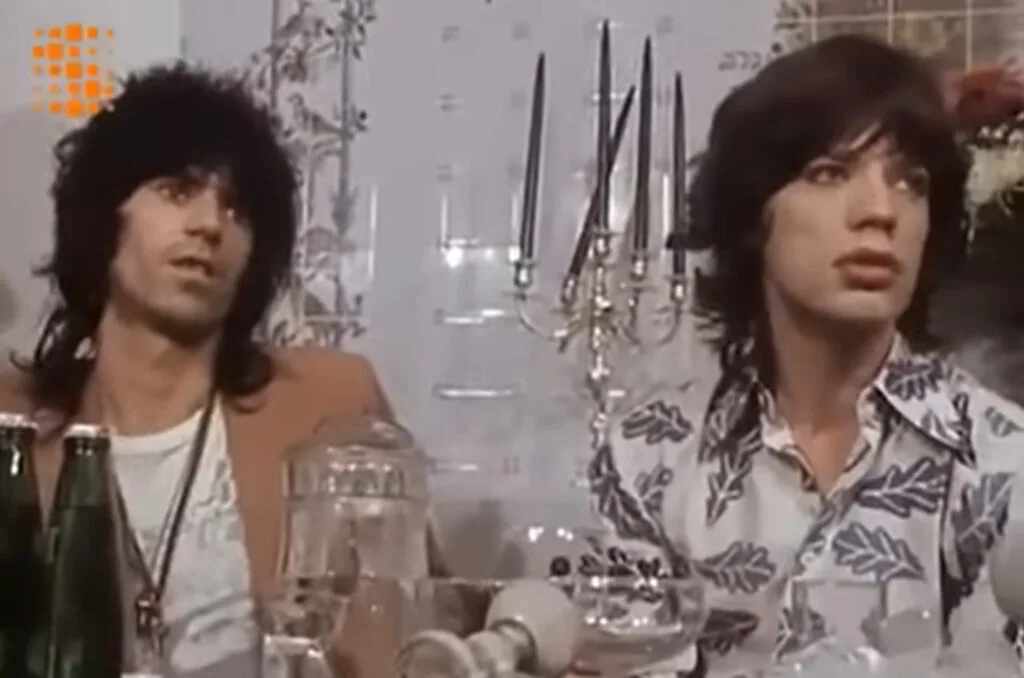
From a scientific point of view, there is nothing incredible in general. Heroin relatively quickly metabolized: during the first eight hours, 88% of free morphine and 84% of total morphine are excreted from the body in the urine. In addition, procedures such as hemoperfusion, blood purification through an external adsorbent or hemodialysis (a method of filtering blood through an artificial membrane, most often used for renal failure), help effectively get rid of toxins, including drugs.
However, it is worth returning to Sanchez's story. According to him, on Monday, September 17, 1973, he booked a hotel for Richards, then he underwent a certain procedure for 48 hours, then “rested and gained strength” for the rest of the week. However, this does not correspond at all tour schedule — the schedule was quite tight, and all the planned concerts took place. On September 17, The Rolling Stones played in Glasgow, and on September 19 in Birmingham. Then a short pause - and the group continued the tour in continental Europe: September 23 - Innsbruck, Austria, September 25 and 26 - two concerts in Bern, Switzerland, September 28 - the performance mentioned by Sanchez in Munich. None of the intervals between concerts can accommodate 48-hour treatment and several days of rest.

Victor Bockris, author of one of Richards' biographies, assertsthat the procedure was carried out between concerts in Innsbruck (September 23, 1973) and Bern (September 26). He describes in some detail what exactly was done to the musician: “The treatment included a hemodialysis procedure, in which the patient’s blood was passed through a pump, where it was separated from a sterile dialysate solution by a semi-permeable membrane. This allowed toxic substances that had accumulated in the bloodstream and would normally be excreted by the kidneys to pass from the blood into the dialysate fluid.”
This version sounds more plausible than the previous one. However, The Rolling Stones gave two concerts in Bern, and the first of them passed September 25, so Richards had at best a day and a half for all the procedures.
However, there is also another version - from Keith Richards himself. In an interview, he explained that nothing like this had happened to him: “Someone asked me how I got clean, and I said that I went to Switzerland and completely transfused myself with blood. Just fooling around. He unbuttoned his jacket and asked: “Well, how do you like my transfusion?” It was just a joke. I'm tired of answering this question. So I told them this story."
Thus, Keith Richards may have undergone some procedures to cleanse his body of drugs. But there was no talk of a complete blood transfusion, especially since there were too many contradictions in the stories of his entourage about this procedure. Moreover, Richards himself denies this. However, as in the case of Ozzy Osbourne, the words of rock stars should not be trusted unconditionally.
Is it true that Jimi Hendrix is to blame for the dominance of green parrots in London?
In the UK, and especially in London, on the street you can often see a bird that is not the most common for these latitudes - a bright green parrot. According to a common version, they bred in the British capital after musician Jimi Hendrix released a pair of birds into freedom in the late 1960s. About this write, for example, in blogs and on websites about travel.
The birds in question are Indian ring-necked parrots (Psittacula krameri). Estimated British Ornithological Society, by 2023 their population in the country reached 12,000 pairs (and these are only those living in the wild). Over the past three decades, this figure has increased 24 times.

There are several myths about the appearance of these parrots in the country. The most popular of them is about Jimi Hendrix, the greatest guitarist in history according to Rolling Stone magazine. According to this legend, in the late 1960s, Hendrix released a pair of ring-necked parrots in the Carnaby Street area of London (there is a version that he did this after taking LSD). They say that it was these parrots, symbolically called Adam and Eve, that laid the foundation for a vast colony of exotic birds.
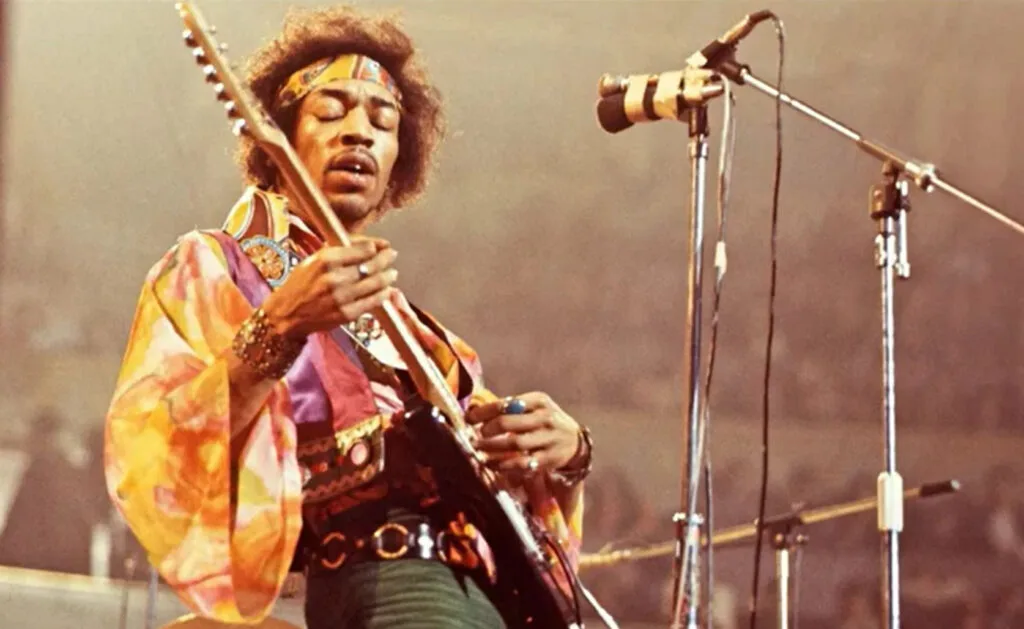
Another legend says that the birds were released into the wild in 1951 during the filming of the film “The African Queen” with Humphrey Bogart and Katharine Hepburn. According to another version, the parrots scattered in the 1970s when airplane debris crashed through the roof of the aviary in Sion Park. Finally, they talk about the consequences Great storm 1987, causing significant destruction.
However, in 2019, scientists finally transferred all these statements to the category of urban legends. British National Biodiversity Atlas (NBN Atlas) fixes in the country of ringed parrots since 1968. However, this only indicates that ornithologists then paid attention to this species, and not the beginning of its spread.
To find out where these parrots came from in the UK, group of scientists decided to use geographic profiling. This method is used primarily in criminology to identify large lists of suspects in serial crimes. In recent years, it has begun to be used in ecology, for example, to study the spread of invasive species.
Scientists worked primarily with newspaper archives. They compared reports of parrots breaking free with popular accounts, but found that such reports first appeared long before that. The earliest article was published in The Essex Herald on July 7, 1886: the author describes a pair of parrots with five chicks living "on good terms" with sparrows in Lincoln's Inn Fields, London. In April 1932, the Middlesex County Times reported parrots seen in Epping Forest and Loughton Cemetery, north-east of London. The publication linked the appearance of poultry in nature with the recent “panic over parrot disease” - from 1929 to 1932, publications about the death of people due to infection began to appear in British newspapers psittacosis (aka psittacosis, or parrot disease). At this time, many began to release poultry into the wild for fear of getting sick. Scientists suggest that it was then that ringed parrots began to conquer space in England.
In addition, there were other waves: for example, in 1955, almost one and a half hundred parrots broke free during a storm in south Wales. Finally, there were occasional escapes - by the early 1960s, parrots had become the most popular pet in Britain, comfortably surpassing dogs and cats.
Scientists have concluded that the spread of parrots in the UK is not associated with any one case - it is the result of the regular release of exotic birds into the wild. “In the other 34 countries on five continents where Psittacula krameri was reported as an invasive species, it did not require the help of rock or movie stars to establish itself [in the wild],” the study says.
Thus, even if Jimi Hendrix released a pair of parrots in London in 1968, his contribution to the spread of this species in Great Britain was not decisive.
Is it true that Mama Cass's death was caused by a ham sandwich?
Cass Elliot, aka Mama Cass, lead singer of the famous 1960s band The Mamas & the Papas, died in 1974 at the age of 32. There were many rumors surrounding her death - they said that drugs killed Mama Cass. But the most popular version of the singer’s death is that she choked on a ham sandwich. The most famous reference to this version is the comedy Austin Powers: International Man of Mystery. The main character, waking up after 30 years of being frozen, sadly crosses out names of his friends, rock stars of the 1960s: “Jimi Hendrix. Died, drugs. Janis Joplin. Died, alcohol. Mom Cass. Died, ham sandwich.”
Cass Elliot died on July 29, 1974 in London, she was found dead in a flat in Mayfair. A typical picture for the early 1970s: in similar circumstances, the bodies of Jimi Hendrix, Janis Joplin, Jim Morrison, and later The Who drummer Keith Moon were found (in the same apartment in which Cass Elliot died before him). The cause of death was usually drug overdose or alcohol poisoning, and sometimes both. But in the case of Mama Cass, they began to say that this was an exception - she allegedly choked to death on a sandwich.
"Even when I was a little girl, when I hung out with my friends at school, they didn't know who my mom was, but I would come home to play with some of these kids, and quite often one of their parents would say to me, 'Hey, did your mom really die from choking on a ham sandwich?'" told BBC Cass Elliot's daughter, Owen Vanessa Elliot-Cugell. She devoted many years to finding out what happened to her mother back in London.

Cass Elliott suffered from weight problems all her life. As her daughter recalled, other musicians often made jokes about this to the singer. However, Cass Elliott made fun of herself - in the chorus of the famous song The Mamas & the Papas Creeque Alley There is a line “And no one’s getting fat except Mama Cass.” This is largely why the sandwich story is so firmly rooted in the media and popular culture.
The day after Cass Elliot's death, many newspapers published the same details of the tragic incident: everyone referred to the singer's doctor, who said that she had choked on a sandwich while eating it in bed in front of the TV.
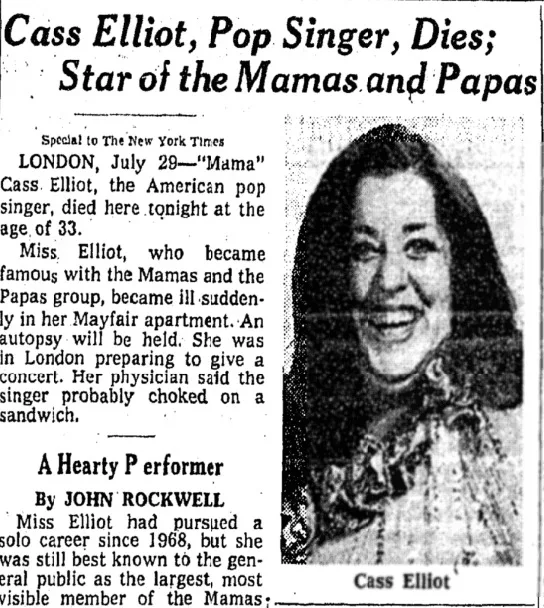
Her daughter Owen was seven years old at the time. Having matured, she began to scrupulously collect information about her mother’s death. Cass Elliot performed at the London Palladium and then didn't sleep for another 36 hours. “She was supposed to spend the entire night at Mick Jagger's birthday party and then go straight to breakfast in her honor, after which she was supposed to have an afternoon tea party hosted by an American journalist. When she returned home, it was already evening the next day. She was hungry, and a dancer from her group made her a sandwich from the only thing there was in the apartment - ham - and left it on the bedside table. She didn’t even take a bite,” Owen says.
The singer’s daughter found out the truth many years later. Her late mother's friend, journalist Sue Cameron told what really happened. Upon learning of the singer's death, she called Mama Cass' manager Allan Carr in London. And he, not knowing all the circumstances, decided to immediately dismiss the rumors about drugs and came up with a story about a sandwich. He asked Cameron to write about it in The Hollywood Reporter to quell speculation until more information came to light. In fact, Cass Elliot died of a heart attack; no drugs were found in her blood, says the singer’s daughter. She subsequently outlined all these discoveries in the book “My mom, Cass"
Did Marilyn Manson really remove his lower ribs to give himself a blowjob?
The entire life and work of Marilyn Manson is filled with various myths, some of which he built himself. Yes, Manson toldthat the main ideologist of Satanism, Anton LaVey, appointed him as a minister in his Church of Satan. Later, the musician admitted that he had exaggerated somewhat, and in the church itself they saidthat this has never happened. The myth about removed ribs appeared already in the 90s and still pops up from time to time. Networks And Media.
Manson spent years building his stage image: every detail, from bright makeup and multi-colored lenses to shocking behavior during concerts and in everyday life, complemented the myth of the most shocking figure of the 1990s.

As mentioned above, the musician often exaggerated his infernalism, but never talked about the ribs removed for self-satisfaction. Moreover, this assumption is quite easy to test. Such an operation would inevitably leave him with scars, and Manson often performed half-naked. However, in the photographs, made V 1990s And Later, such scars are not visible on Manson.
In addition, the musician himself laughed at this legend. In his autobiography "Long, hard way out of hell"Manson wrote: "If I really had my ribs removed, I would suck my own dick in"The Wonder Years" (a series in which, according to another absurd theory, supposedly starring Manson. — Approx. ed.). Besides, who has time to kill puppies (another famous rumor about a musician - Ed.) when you can suck your own dick?”
Note that Manson is not the first celebrity to be associated with the myth of ribs removed for self-satisfaction. The same rumors were spread about Gabriele D'Annunzio, Italian poet and politician, ruler of the self-proclaimed Republic of Fiume that existed in 1919–1920. His amorous exploits and sensual experiments were legendary, but the story about the ribs is clearly a fabrication. An eccentric poet more than once took pictures half or completely naked, and no traces of a difficult operation are visible on his body either.
Cover photo:
- BBC. Who, What, Why: How is Keith Richards still alive?
- BBC. Jimi Hendrix cleared of blame for UK parakeet release
- Five legends about John Lennon
- Is it true that The Beatles secretly came to the USSR?
If you find a spelling or grammatical error, please let us know by highlighting the error text and clicking Ctrl+Enter.


